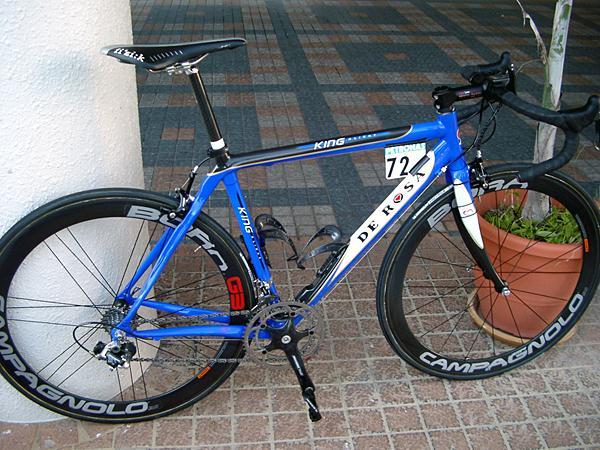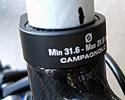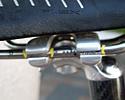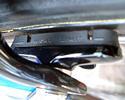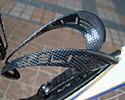
Recently on Cyclingnews.com |
Reviewed February 28, 2005
Ryan Cox's Barloworld-Valsir De Rosa King X Light
Long live the KingBy Anthony Tan As the carbon revolution was gaining ground and interest, the original De Rosa King turned more than a few heads when it was first spotted in the pro peloton. It was mid-2002 when Swiss Tour veteran Laurent Dufaux and a few other members of his Alessio team began testing early prototypes of the 'heart' company's first all-carbon machine, before using the King in that year's Tour de France. Upon its release to the public the following year, only a very limited number were available, with just 12 making their way to the US, according to US-based online retailer Competitive Cyclist, and even fewer to other countries outside of mainland Europe, such as the United Kingdom, Australia and South Africa. Today, a significantly larger quantity of one of De Rosa's most exotic frames are now available (around 200 De Rosa King frames are imported to the US each year), but demand has also increased since then, along with a few subtle changes. When Cyclingnews wandered over to Barloworld-Valsir's pit area the day before the opening stage of the Tour de Langkawi, team mechanic Douglas 'Dangerous' Paterson was working busily alongside head mechanic Paul Farrence, but was more than eager to have a chinwag. Besides the very svelte, very Gios-blue paint-job, I first mention to Dangerous Doug (I wish I could get a name that cool!) that Ryan Cox's 2005 De Rosa King X Light looks awfully similar to last year's model, only without the 'X Light' suffix. "Ya... it's still all carbon, " begins Paterson with slight hesitation, before correcting himself. "Well, mostly." "Last year, the head tube was all aluminium, but this year, to make the frame even lighter, only the top and bottom are aluminium, while the rest is carbon. There's also an internal aluminium sleeve around the bottom bracket and aluminium tips." (Sheez, with that South African accent and all, I almost thought he said something else for a second... ) Cristiano De Rosa told Cyclingnews back in 2003 that the unusually shaped downtube particular to the King and the Prototype 1d (a yet-to-be-released, even lighter version of the King X Light), was the result of over a year of development in co-operation with Mizuno of Japan - claimed to be the world's number one company for development of carbon fibre for sporting goods applications - so it's no surprise to see this and everything else bar the head tube unchanged for this year, as well as Mizuno supplying the 1'1/8" full carbon fork. As my eyes make their way from the front to rear of the bike, I notice something a little different about the chain, which has two holes drilled on either side of each link. "Hey, is this a Record chain?" I ask. "Ya - we're the only team in Langkawi to have these new Campy Record chains. Even Liberty [Seguros] don't have them!" Paterson says with a big grin. [Editor's note: The Record chain has been around since 2004, so this claim should perhaps be taken with a pinch of salt.] "How about these brake pads, then?" I say, almost certain the team wouldn't be using normal Record brake blocks with the ridiculously expensive, but ridiculously light and ridiculously aero Campagnolo Bora G3 carbon wheels. "Ya (South Africans love saying 'ya'!); Campy now make carbon-specific brake pads for wheels like the G3s and Hyperons, which we also use, along with the Neutrons," Paterson informs me. Something also unique to the Barloworld bikes is the use of Deda's 'Dog Fang' that is 'collared' right down the bottom of the seat tube, preventing the chain from falling off when downshifting from the large to small chainring or riding over extremely rough surfaces. Interestingly, the 2005 Tour de Langkawi victor likes the old-fashioned Belgian Classics-style handlebars, which have a much narrower and non-ergo drop, unlike today's more popular anatomic models. PhotosFor a thumbnail gallery of these images, click here Images by Anthony Tan/Cyclingnews
| |||||
Full specificationFrame: 2005 De Rosa King X Light Critical measurements Cranks: Campagnolo Record 10 speed carbon, 172.5mm, 39/53 |
Rim: Campagnolo Bora G3 (Campagnolo Hyperon and Neutron also
used) Bar: Deda Newton 26.0, 42cm (C-C) Pedals: Look Keo | ||||

